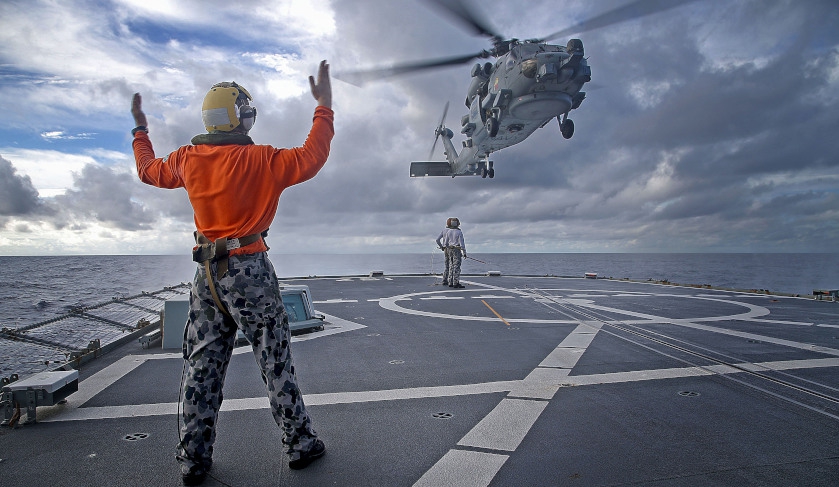The Royal Australian Navy’s Aircraft Maintenance and Flight Trials Unit (AMAFTU) has a busy 2017 planned, with seven first of class flight trials scheduled before September.
To continue reading the rest of this article, please log in.
Create free account to get unlimited news articles and more!
The unit, along with Royal Australian Air Force’s Aircraft Research and Development Unit and Army Aviation Test and Evaluation Squadron, represents the Australian Defence Force's core test and evaluation capability for aircraft.
Officer In Charge of AMAFTU, Commander (CMDR) David Hutchinson said that during 2016, the team completed first of class flight trials for the ScanEagle Unmanned Aerial System on HMAS Choules. They also completed Chinook CH-47F trials on the Landing Helicopter Dock (LHD) HMAS Adelaide. The Army helicopter has now been cleared for use should it be required for humanitarian aid and disaster relief operations.
“It’s been a busy year, but 2017 is shaping up to be even busier,” he said.
“We’ve already started preparing for first of class trials for both the Multi Role Helicopter MRH-90 Taipan and the MH-60R Seahawk ‘Romeo’.”
The MRH-90 replaced Navy’s Sea King fleet and Army’s Black Hawks, while the MH-60R is the Navy's next generation submarine hunter and anti-surface warfare helicopter.
“In January, we embark in HMAS Melbourne for the start of the Romeo trial in the Adelaide Class of guided missile frigates,” CMDR Hutchinson said.
“In late February, the Romeo team move onto HMAS Canberra and join their Tiger and MRH-90 compatriots to continue the LHD first of class trial.
“From February to April, we’ll have the Eurocopter Tiger Armed Reconnaissance Helicopter ARH, MRH-90 and MH-60R all onboard the Canberra Class ambhibious ships conducting first of class flight trials.
“Mid-year, the MRH-90 will conduct first of class flight trials in the Anzac Class and in August we’ll have the unmanned aerial systems on the Adelaide Class to conduct vertical take offs and landing trials.
“Finally, in September we’ll run first of class flight trials on the EC-135 T2+, the new military training helicopter that will replace the Squirrel.
“We’re at the coal face of Navy working to becoming a more agile, integrated network and potent force.”
Each first of class flight trial is unique, which CMDR Hutchinson said keeps the unit on their toes.
“Navy hasn’t got any experience with vertical take off and landing, so the unmanned aerial systems trials in August will be valuable. We aren’t walking into it thinking it will be a box ticking exercise. We’ve also never taken a Tiger helicopter to sea before," he said.
“For the Romeos, we’re expanding on the ship helicopter operating limits they have at the moment and we’re looking to provide a lily pad capability for the MRH-90 on the Anzac Class,” CMDR Hutchinson said.
Located at Naval Air Station Nowra, AMAFTU is responsible to Commander Fleet Air Arm, Commodore Chris Smallhorn, who said the unit primarily test Navy rotary wing aircraft but also army helicopters at sea.
“AMAFTU is highly specialised with over 50 years' history and experience," he said.
“The small unit of approximately 25 personnel is capable of all levels of experimental flight test. The flight test pilots, engineers and systems specialists ensure that Navy’s aircraft are safe to operate at sea and from our ships, and that the aviation weapon systems we buy do their jobs and that we understand those systems' limits.
“It is one of the crown jewels of the Fleet Air Arm and a key contributor to the war-fighting effect.”

 Login
Login







